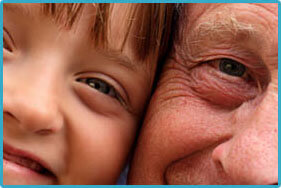Menu
There’s no arguing the effects of time. As we age, many changes take place in our body. Unfortunately, everyone can easily see the ones that affect our skin and appearance! But how our face changes as we age is actually a pretty complex and individualized process. Factors such as genetics, environmental exposures, diet and health problems can all cause us to age differently.
 Most of the changes seen as we age come from a couple of different things. First, our skin begins to lose collagen and elastin, which are the vital structures that help it maintain its strength, fullness and elasticity. When we are young, collagen and elastin are abundant in our skin. Our faces are full and round. As we get older, these structures breakdown. We also lose our ability to readily make more, which compounds the problem. The end result is thin, wrinkled and sagging skin.
Most of the changes seen as we age come from a couple of different things. First, our skin begins to lose collagen and elastin, which are the vital structures that help it maintain its strength, fullness and elasticity. When we are young, collagen and elastin are abundant in our skin. Our faces are full and round. As we get older, these structures breakdown. We also lose our ability to readily make more, which compounds the problem. The end result is thin, wrinkled and sagging skin.
Secondly, our underlying support structures (bones and fat pads) also change with time. Bone may recede and fat pads are like balloons that slowly deflate. Gravity takes its toll, and it can literally seem like your face is sliding downward! These changes make our faces look long, square and hollow. They result in jowls, bags and heavy creases and folds between the eyes and around the mouth.
Enter dermal fillers! These amazing products have revolutionized the way we fight these unwanted signs of age. Injectable gels made of hyaluronic acid like Restylane, Juvederm and Restylane Lyft can be used to rebuild the underlying supporting structures as well as rejuvenate the skin by stimulating the formation of elastin and collagen. We think of these products as having the capability of providing “support columns” in the skin.
Take a look at a patient injected with Restylane in the photograph below. By injecting “support columns” into the cheek area with Restylane, we gave her more support and volume in this area. Look at how her cheek looks heavy, almost saggy, in the before picture, and notice the “separated” appearance her cheek has from her lower eyelid area. In the after picture, you can see how these “columns” of Restylane have revolumized her cheek and reconnected her cheek to her lower eyelid creating a smooth transition. The horizontal lines or depressions that you see in the before picture have disappeared.
